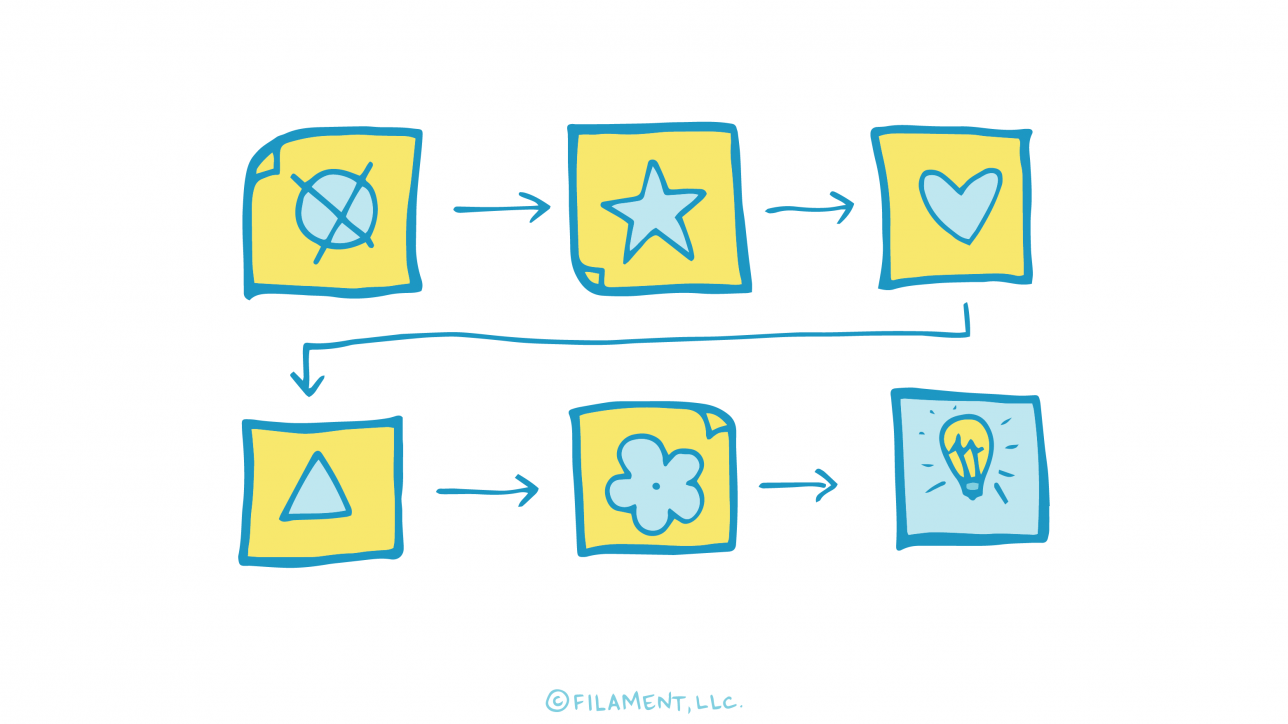Storytelling in marketing isn’t new. It’s been around since ancient times when citizens in Ancient Greece used the Agora, an open space for assembly, to recruit soldiers and sell their goods. That staying power—in addition to the reasons we’re going to detail for you here today—offers strong grounds for incorporating storytelling into your content marketing strategies. In addition to offering the benefits of storytelling, we’ll also offer ways to integrate storytelling into what you’re already doing so you don’t have to reinvent the wheel.
Chances are you’re already telling stories without being aware of it. (If you’re telling stories and doing so mindfully, well done! You’re ahead of the pack.) This article can still be useful for you in that it will provide ways to better use this practice to your advantage by thinking through it a bit more thoroughly.
Beginning, Middle, End
Storytelling keeps your audience coming back for more when it creates a beginning, middle, and end for that audience to follow. Karen Gunelius, a 20-year marketing veteran and regular contributor to Forbes, suggests setting it up this way: 1) establish your story setting and the characters, 2) set up your main character’s problem and present conflicts that get in the way, and then 3) create a resolution. This is what we call a story arc, and the best story arcs create suspense so that your audience wants to stick around to see what happens next and share the story with others.
Perpetual Marketing
Following this principle, storytelling becomes a perpetual marketing tactic when you create multiple pieces in which one feeds off the next. This allows you to integrate offline and digital marketing. Teasers are another great example of creating a story arc that keeps your audience coming back for more.
Great Characters
People love great characters. They’ll stick with the story just to see what happens to them. As a result, first and foremost, you want to make your brand a lead player in the stories you tell. This offers a great opportunity for showcasing your brand’s personality. You can also create fictional characters—think Jake from State Farm or Allstate’s Mayhem—to entertain your audience. Possibly even better, your fictional characters could be based on your buyer personas in order to tell stories from their perspectives. Whichever route you take, make sure your characters are compelling enough that your audience will want to follow their story arc.
User-Generated Content
Stories about your brand don’t only have to come from you. You can encourage your customers to join in telling your story with user-generated content. This lets your customers be a character in the story, too. User-generated content can take numerous forms, from product reviews and testimonials to user-generated content campaigns on social media.
Emotional Connection
Because good stories naturally create an emotional reaction in people, storytelling is a great opportunity to create an emotional connection between your brand and your audience. But be mindful here, you don’t want to create just any emotional reaction—you want to create a favorable emotional reaction. What “favorable emotional reaction” means to you will depend on your audience, your brand, and your business objectives.
Visual Stories
Social media networks like Pinterest, Instagram and Snapchat offer unique ways to create compelling visual stories. These visual stories don’t have to be complicated either. You could simply create a series of snaps for Snapchat’s My Story feature. When you’re deciding where to tell your visual stories, check with your audience and where they spend their time.
Good storytelling is about framing the work you do, the products and services you offer, for your audience in a way that imparts its importance to your audience. Stories make it possible to surround your audience with brand experiences that they can pick and choose from. You can tell a story about anything—even data—by applying creativity. And, as you can see from the benefits illustrated above, storytelling can significantly help you build your brand.
Ready to tell some awesome stories about your brand and what you do? Get in touch with Filament for help crafting compelling stories for your target audience.


